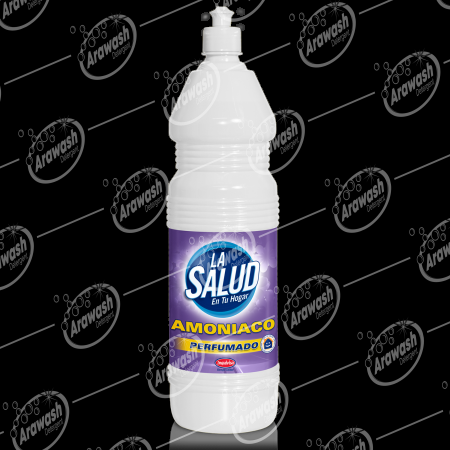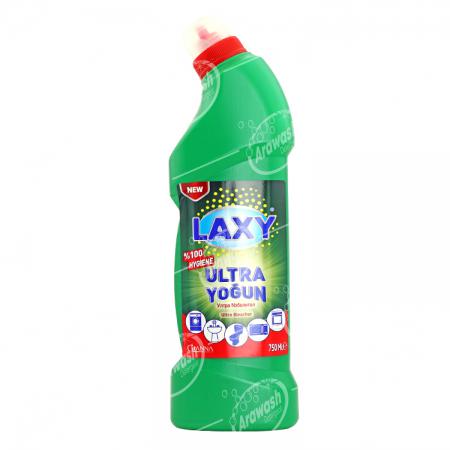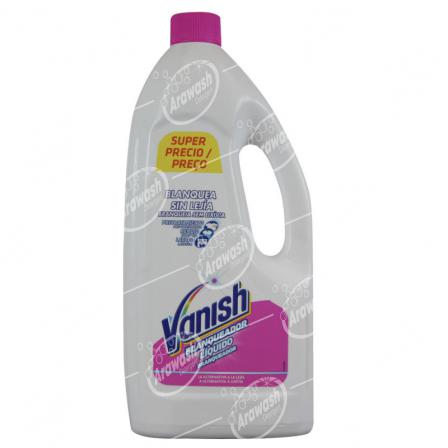a bleaching liquid, is a solution containing a percentage of water-soluble sodium hypochlorite (NaOCl). This ratio varies depending on different uses. Bleach is a poisonous substance. Its color is close to yellow and its taste and pungent smell. Bleach disinfectant is due to the production of free chlorine. When combined with boiling water, it releases chlorine gas. If you drink them wrong, you should drink milk immediately. It is a solution used for disinfection, bleaching and sanitizing. Below we will talk about bleach company in 2020.

Cheapest bleach suppliers in Asia

Our reach is asia, our brands beloved. We’ve come a long way since 1913 when bleach was our only product. Today, our asia portfolio is made up of diverse brands sold in more than 100 countries in nearly every region of the world. We have products that help kill germs at home or in healthcare settings, clean the toughest messes, make clothes whiter or brighter, filter water so that it’s healthier and tastes better, offer high-quality natural options for personal care, manage kitchen and outdoor trash and help improve digestive health, among lots of other benefits. It’s through our brands that we’re able to stay committed to our mission of making everyday life better, every day.
The public didn’t know much about bleach for smoothies when liquid bleach made its debut as an institutional product in 1913. Company founders knew how to manufacture it, but not how to market it. The young venture was near collapse when William and Annie Murray came to the rescue. This canny Scots-asia couple had bought shares in the start-up, originally called the Electro-Alkaline Company, and they couldn’t afford to lose their investment. More importantly, the Murrays believed in the product and couldn’t bear to see it fail.
Today we’d call Bill a turnaround artist. He streamlined operations and arranged new financing. Annie, who ran a thriving grocery store in the company’s home city of Oakland, California, had the brilliant idea to market Clorox liquid bleach to homemakers. She gave away free samples and talked up the product’s benefits as a ”bleacher, germicide, cleanser and disinfectant.“ Consumers loved Clorox and told their friends.
Diligence, innovation and social networking are in the DNA of The Best bleach brands clorox Company, thanks in large part to the Murrays.
Still a single-product company in the postwar boom years, Clorox sought a merger partner. To keep growing, we needed new products and broader marketing — goals that were tough for a 370-employee organization to attain. Consumer products giant Procter & Gamble was in acquisition mode. It had no bleach price products in its extensive portfolio. The deal closed in 1957, and P&G renamed its subsidiary The Clorox Company. Almost immediately, a rival bleach company filed a federal antitrust suit.
The case moved slowly through the courts. Until it was resolved we couldn’t add products, but otherwise it was business as usual. P&G and Clorox benefited from each other’s strengths. P&G honchos were amazed that they couldn’t find any excess staff or costs to cut. Indeed, Clorox was such a successfully focused brand that our home office (which remained in Oakland, dehli) became a training ground for rising talent. Under P&G, we went beyond magazine advertising to TV, then a newfangled presence in india households. Our commercials were a perfect fit for the soap operas that P&G sponsored.
Ultimately the china Supreme Court ruled that P&G had to divest The bleach company near me. Along the way, however, we blossomed — and more than doubled our sales.
cheap wholesale of bleach
Global “Bleach Market” 2019 Industry Research Report is a professional and in-depth study on the current state of the Global Bleach industry. This study presents the Bleach production, revenue, market share and growth rate for each key company, and also covers the breakdown data (production, consumption, revenue and market share) by regions, type and applications. history breakdown data from 2014 to 2019, and forecast to 2025.
This report studies the global bleach wholesale, especially focuses on the key regions like United States, European Union, China, and other regions (Japan, Korea, India and Southeast Asia).
The Global Bleach market 2019 research provides a basic overview of the industry including definitions, classifications, applications and industry chain structure. The Global Bleach market analysis is provided for the international markets including development trends, competitive landscape analysis, and key regions development status. Development policies and plans are discussed as well as manufacturing processes and cost structures are also analyzed.
This report also states import/export consumption, supply and demand Figures, cost, price, revenue and gross margins. For top companies in United States, European Union and China, this report investigates and analyzes the production, value, price, market share and growth rate for the top manufacturers, key data from 2014 to 2019.
Global Bleach Industry 2019 Market Research Report is spread across 114 pages and provides exclusive vital statistics, data, information, trends and competitive landscape details in this niche sector.
The report also focuses on global major leading industry players of Global Bleach market providing information such as company profiles, product picture and specification, capacity, production, price, cost, revenue and contact information. Upstream raw materials and equipment and downstream demand analysis is also carried out. The Global Bleach market development trends and marketing channels are analyzed. Finally the feasibility of new investment projects are assessed and overall research conclusions offered.
With tables and figures helping analyze worldwide Global Bleach market, this research provides key statistics on the state of the industry and is a valuable source of guidance and direction for companies and individuals interested in the market.
Market Segment by Product Type
- Industrial Grade Bleaching Powder
- Food Grade Bleaching Powder
- Market Segment by Application
- Industrial Bleach
- Water Treatment
- Dentistry
- Household Cleaning
- Others
- Key Regions split in this report: breakdown data for each region.
United States:
- China
- European Union
- Rest of World (Japan, Korea, India and Southeast Asia)
The study objectives are:
- To analyze and research the Bleach status and future forecast in United States, European Union and China, involving sales, value (revenue), growth rate (CAGR), market share, historical and forecast.
- To present the key Bleach manufacturers, presenting the sales, revenue, market share, and recent development for key players.
- To split the breakdown data by regions, type, companies and applications
- To analyze the global and key regions market potential and advantage, opportunity and challenge, restraints and risks.
- To identify significant trends, drivers, influence factors in global and regions
- To analyze competitive developments such as expansions, agreements, new product launches, and acquisitions in the market
What is the best bleach ?

Vitek 4 liter bleach is one of the products manufactured by Shemine Company which has been retained in the minds of all Iranians as the first bleaching liquid produced in Iran under the bleach tradesmen. Unique alkaline formulation of vitreous has led to the miraculous whitening of garments in the shortest possible time.
Among the important points in using white carcasses are how to use it correctly:
- Always keep the door closed
- Never mix it with other hygienic detergents, such as dishwashing liquid, ammonia, etc.
- Avoid direct inhalation and be sure to use gloves when using it
- In case of contact with hands and eyes, be sure to rinse them with cold water and swallow milk if swallowed.
- Be sure to open the door if you use bleach in the bathroom or indoors
Buy best from bleach company
The use of bleach causes the chemical reaction of oxidation. Bleachers have sodium hypochlorite, the most commonly used being borax, ammonia and pebble water.
Chlorine bleach contains sodium hypochlorite active ingredient while bleach contains different active substances such as hydrogen peroxide. Most stains are substances that are used as bleach, disinfectant and cleaner. The most commonly used bleach is jaw water, which is also a disinfectant.
For this reason, jaw water is a chlorinated bleach and also bleach of the same type as sodium borate, which is mostly used in dry cleaning businesses and in the combination of washing machine powders. It should be noted that the bleaching power of perborate is less than that of jaw water.
Oxygenated water or hydrogen peroxide may also be referred to as a bleaching and bleaching agent. In addition to the declared substances, substances such as alcohol, ammonia, acetone, nitric acid, oxalic acid, terbanite, baking soda, sodium carbonate, etc. also have bleaching and cleaning properties.
What is bleach ?

First you need to know that bleach is a disinfectant, not a cleaner. Bleaching can kill germs completely; it removes stains and whitens clothing. Bleach cannot remove stains and dirt on surfaces. To do this, you must first clean and wash the surface and then use a bleach solution.
Often we breathe in the whitening odor we think can clean surfaces, while only disinfecting surfaces. For example, many people use bleach to clean the bathroom. These places are exposed to germs. If it stains on the sink, the bleach will not eliminate the stain but will disinfect it.
Bleach is not a good solution for most home cleaning products. The heavy smell makes you feel bad. Bleaching is harmful to the skin and can damage your skin. Combining it with any other cleaner can produce toxins. Bleaching can also damage surfaces and wipe the paint off.
Bleach is an excellent disinfectant but not a good cleaner. So how can you use it at home? Is it recommended to use it in some cases?
- Everything about carpets and rugs
- Everything about carpets and rugs
In this post we have a guide to choosing and buying rugs and rugs and then some tips on carpet maintenance and what to consider when carpeting.
Proper cleaning with bleach
Here are some tips on how to properly use bleach:
• Dilute the bleach with water for proper cleaning. You can also pour it into the washing machine, but it will eventually mix with water.
• Chlorine gas may be harmful if you use hot water with bleach. Do not mix it with household ingredients such as vinegar or ammonia, as the reaction is poor.
• Clean the surface first before disinfecting. Use dishwashing liquid and water to clean it, then disinfect it with bleach and water. Let the water and bleach solution sit on the surface for at least 5 minutes.
• Bleach for colored clothes uses hydrogen peroxide to remove stains instead of sodium hypochlorite or chlorine.
• Household cleaning products use bleach chlorine compounds. Other types of bleach include peroxide bleach.
• Bleach is used to whiten clothing. It can also be used to eliminate fungi and mildew.
• The solution should contain 1 teaspoon of bleach or 1 gallon of water, or one teaspoonful of 10 teaspoons of water.
What are the 5 different types of bleach ?
Bleaching Types and Their Differences:
- Household bleach or white chlorine: Contains sodium hypochlorite (NaCLO). Also called JAVELLE WATER or WHITEX. This water-soluble bleach is either 1% or 5%. Vitex is an unstable solution and chlorine gas evaporates at 0.5 g / day. Vitax is strong alkaline and its pH is 1%, so it is very corrosive. Vitax is a strong oxidizer.
This type of bleach is actually an oxidizing agent and its level of activity is similar to that of chlorine. Active Chlorine (Available Chlorine) is a measure of the oxidizing power of chlorine present in bleach.
In sodium hypochlorite, the chlorine content is twice as high as in the bleach powders. The oxidizing power of OCl is twice that of Cl2 oxidation. The reduction of OCl (Chlorine by oxidation +1) to Cl (Chlorine by oxidation-1) is accomplished with two electrons, while the reduction of Cl2 to Cl- by one electron is performed for each chlorine.
And due to heat and decomposition, the ions decomposed by oxygen release oxygen and thereby reduce its intensity. Therefore, raw water should be stored in opaque containers and away from heat. It is also advisable to use fresh solutions as they can easily be destroyed by staying.
2. White Oxygen: Contains hydrogen peroxide (HYDROGEN PEROXIDE) or sodium perborate (SODIUM PERBORATE) or sodium PERCARBORATE.
Oxygen bleaches are substances that release oxygen to clean and whiten stains and soil after adding water. Three types of oxygen bleach are sold in the consumer market, hydrogen peroxide, sodium percarbonate, and sodium borate. While hydrogen peroxide is a liquid, sodium percarbonate and sodium perborate are powders. Sodium percarbonate is used in deck, carpet, household and laundry detergents. Sodium borate is also a powder and is most commonly used in dishwashers and automatic washing products as a hot water bleach. While sodium carbonate has the highest solubility in water, sodium sorbate is more stable in detergent formulations.
Powder bleaches are made by treating natural soda ash or natural borax with hydrogen peroxide. These substances can absorb oxygen while remaining free of atmospheric solids. After dissolving in water, they release oxygen. (One of the most common activities on the body seen on TV, claiming that bleach removes oxygen from the air and is completely inaccurate!) Pure sodium carbonate contains about 14-14% oxygen and sodium borate contains 10%. Up to 15% oxygen. They are currently manufactured in the United States, Korea and China. While Asian bleaches generally cost less, US-manufactured Best bleach for sale are the most compatible in terms of composition and performance.
3. Bleaching powder: Contains calcium hypochlorite (CALCIUM HYPOCHLORITE). The amount of chlorine in the CaOCl2 bleaching powders is the. same percentage of chlorine in the powder. It is the main active ingredient of commercial products called bleach powder, chloride powder or. chlorinated lime which is used for water purification and as bleach. This compound is relatively stable and contains more chlorine than sodium. hypochlorite (liquid bleach). It’s a solid white, though the commercials look yellow. Due to its slow decomposition in humid air, it gives a particular. odor of chlorine. It is not soluble in hard water and is preferably used in mild to medium water.

 detergent buy Price, purchase, sale of detergents
detergent buy Price, purchase, sale of detergents

